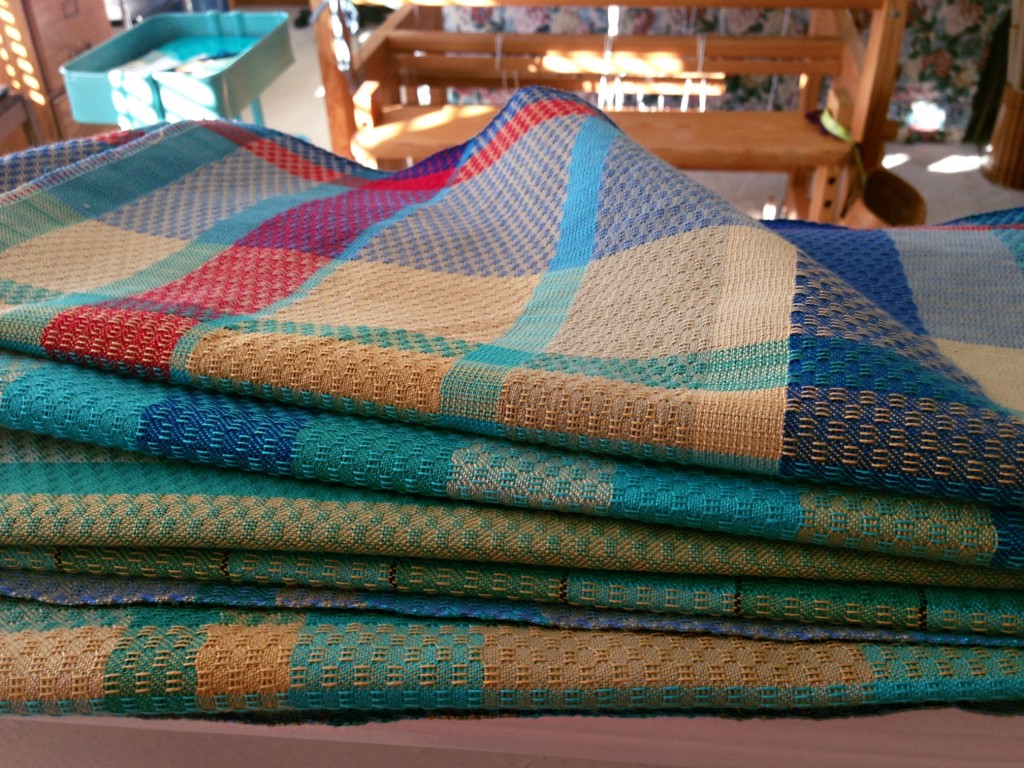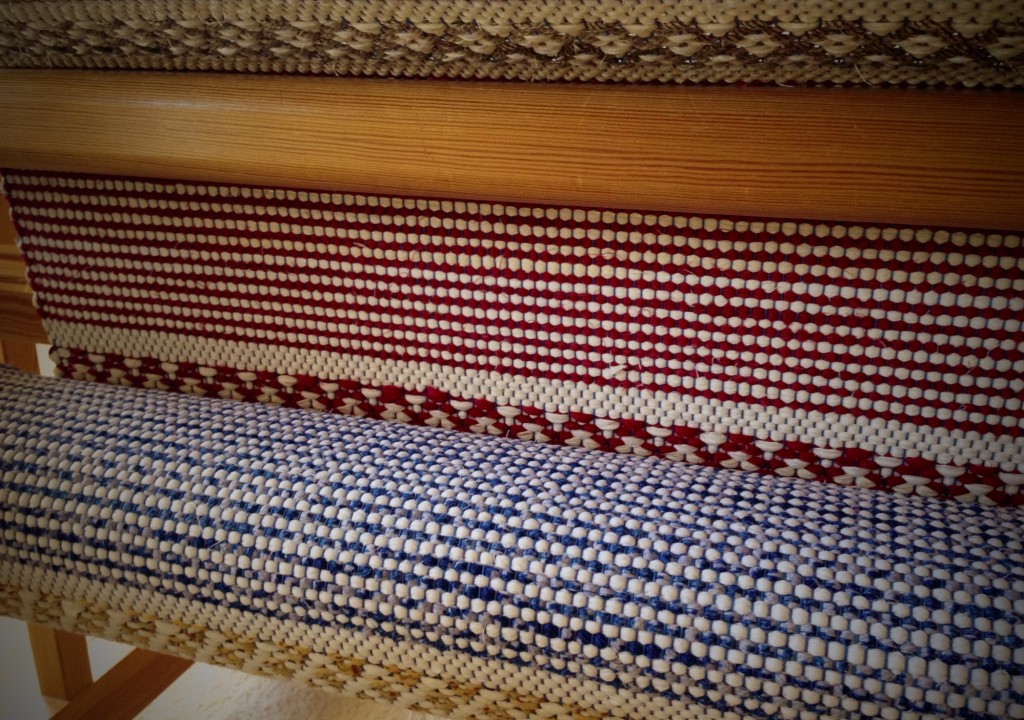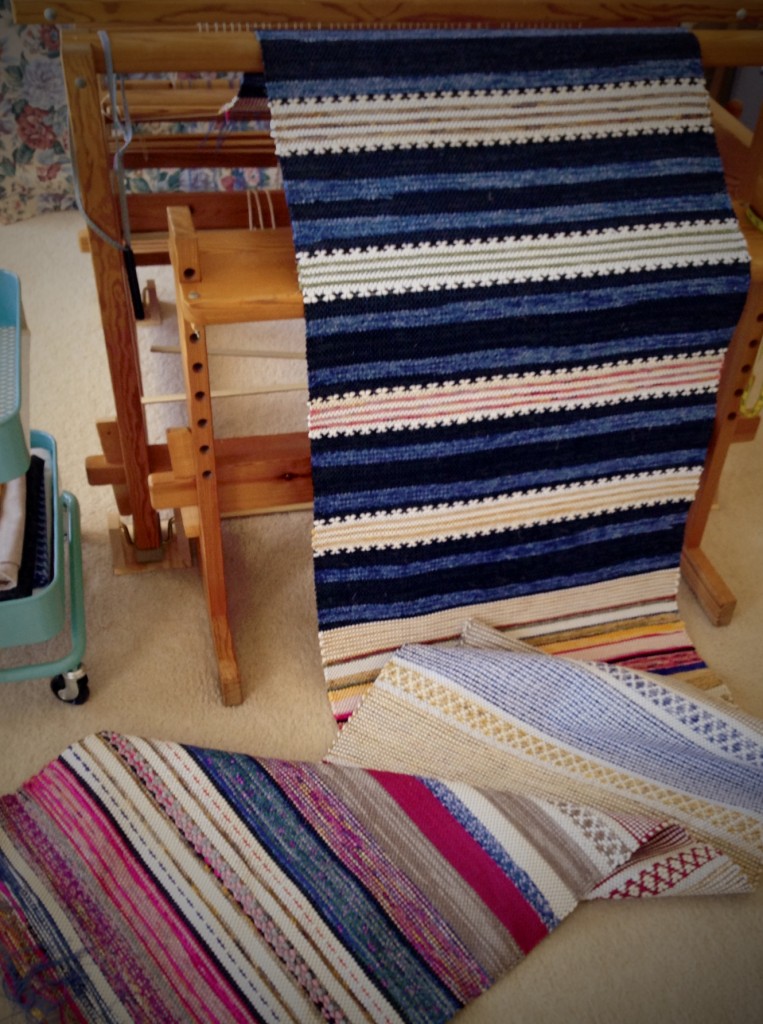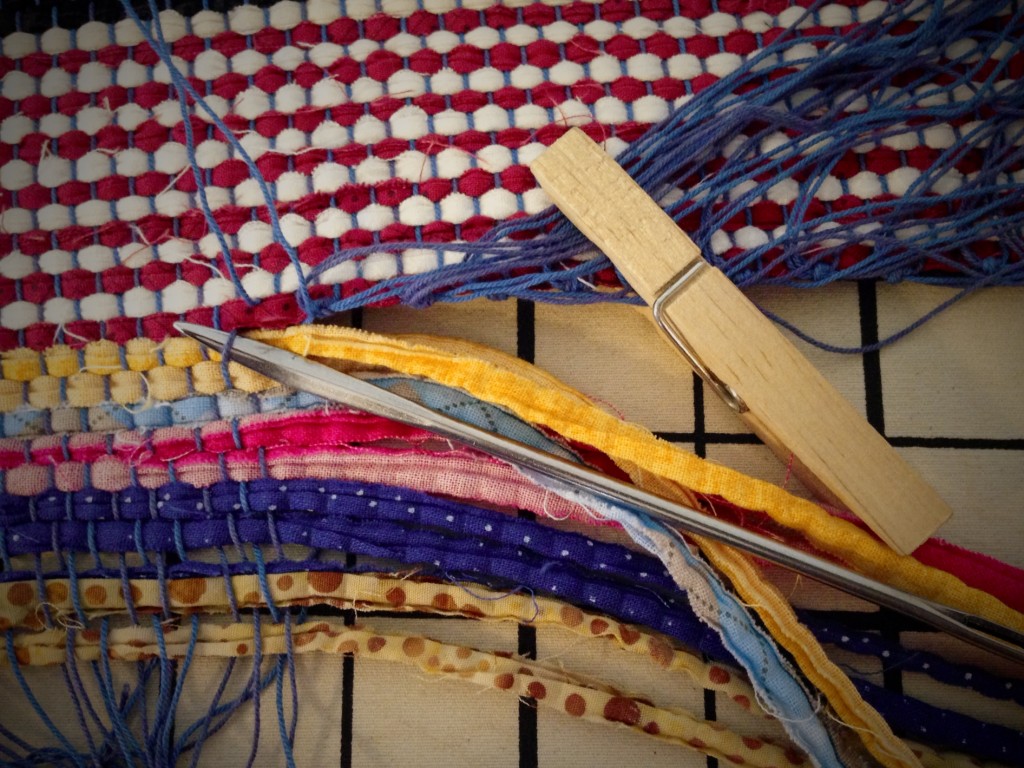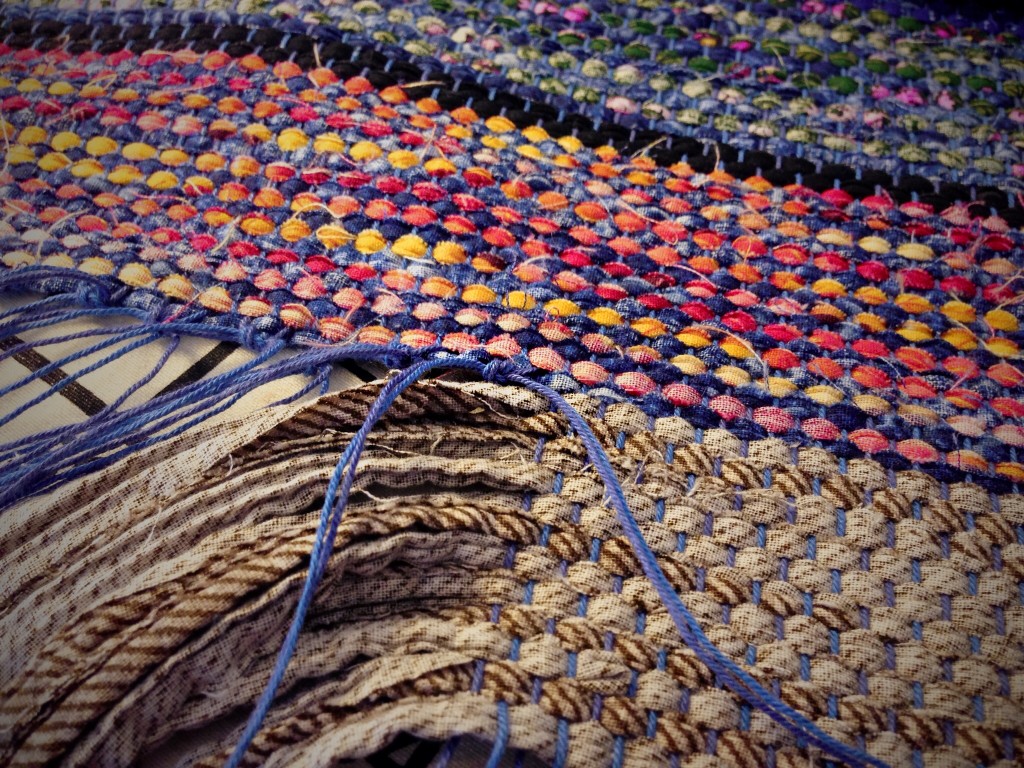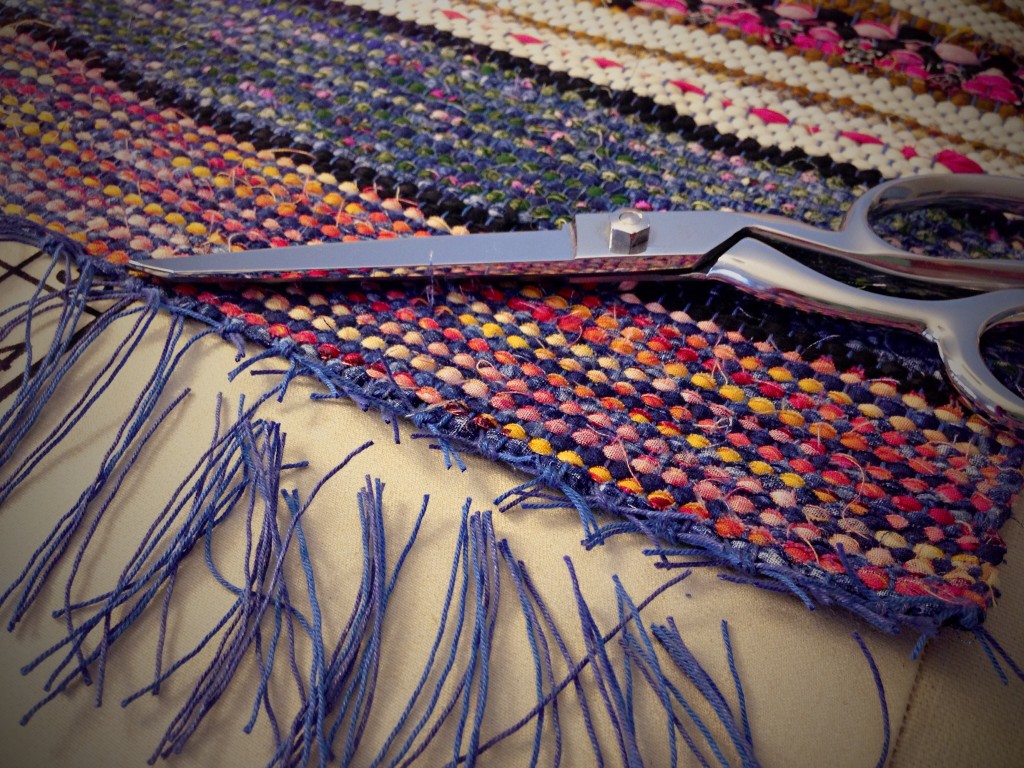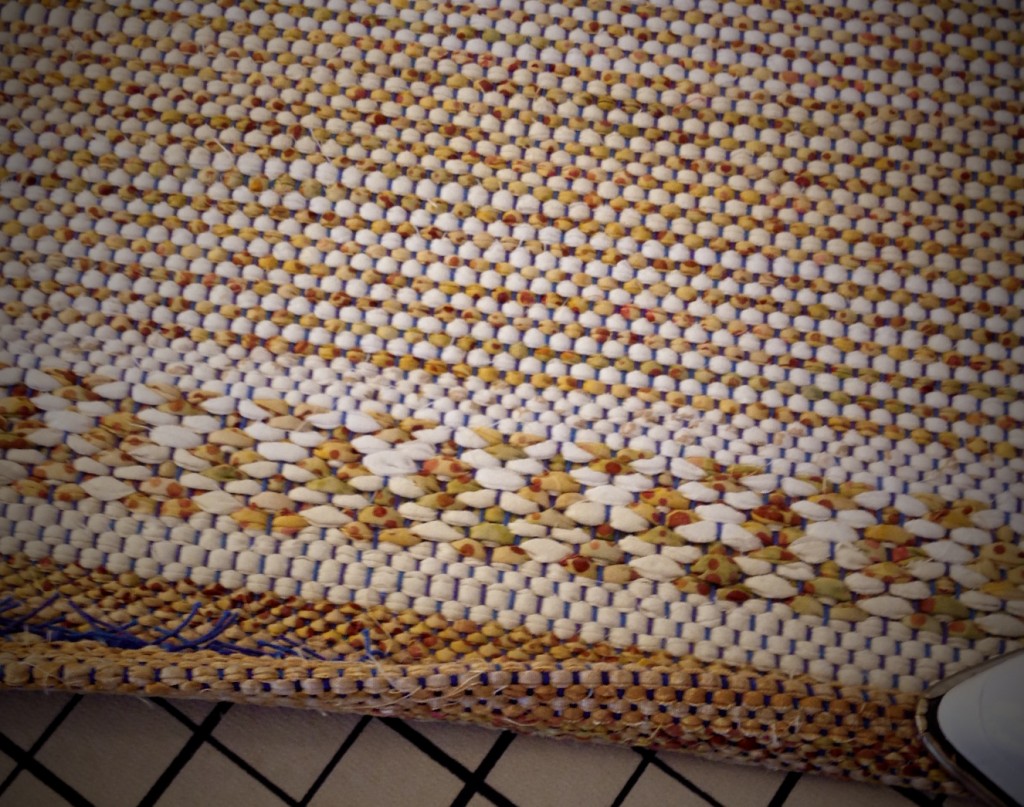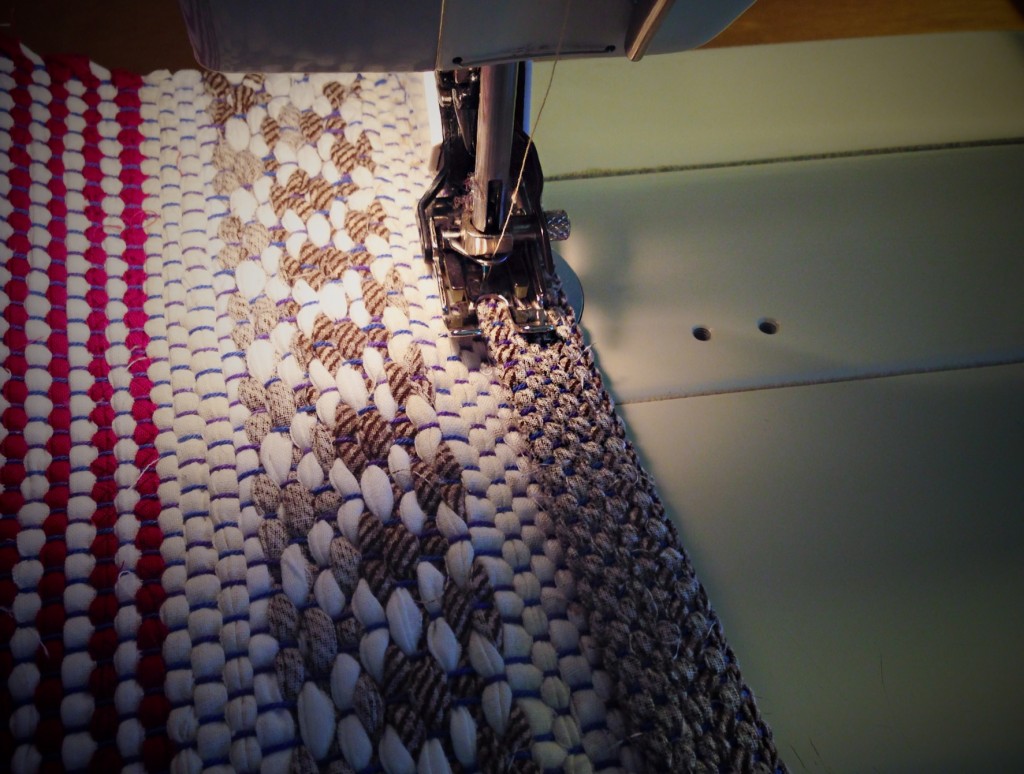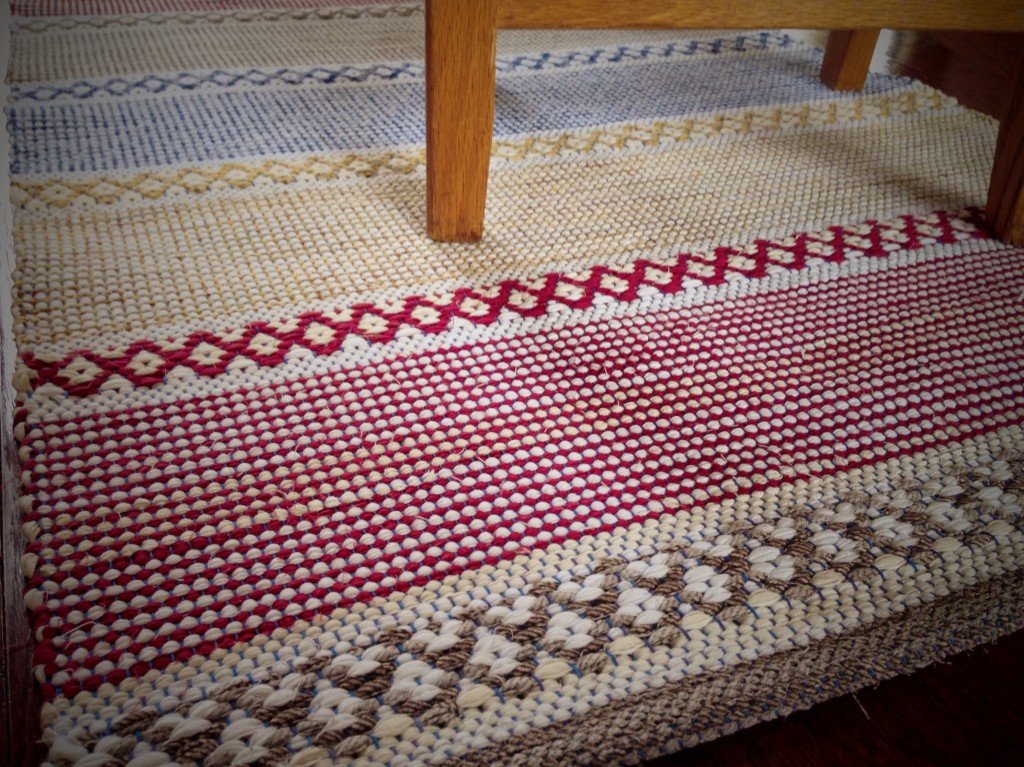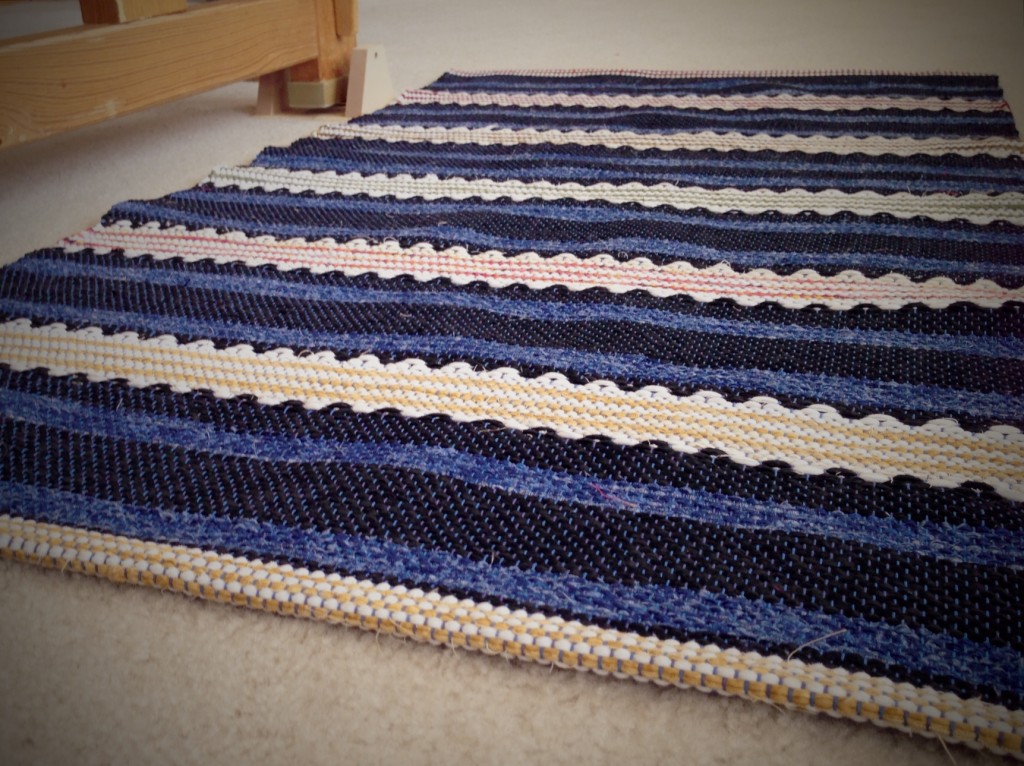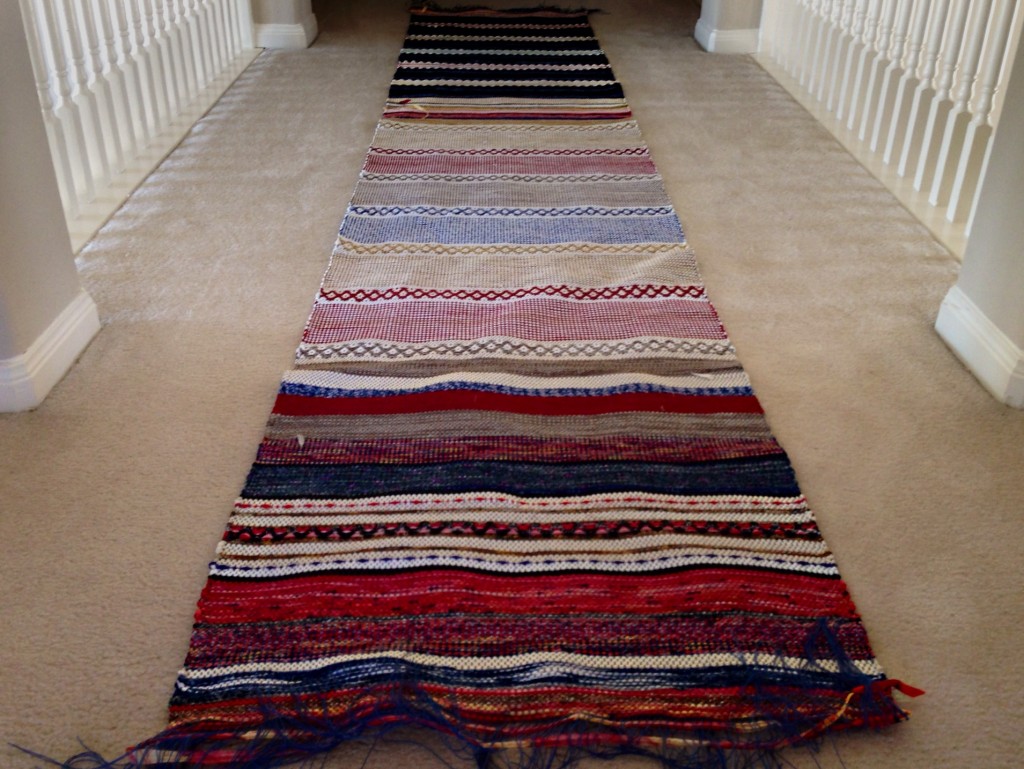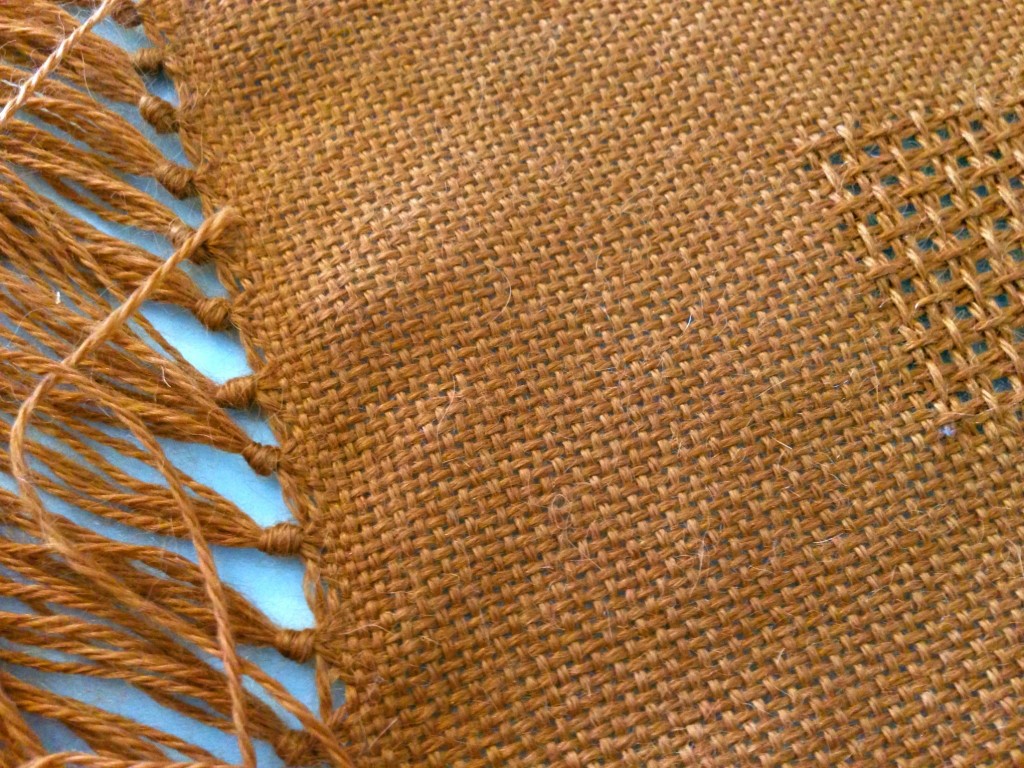First, a short tutorial for tying perfect lattice fringe, and then some thoughts about keeping our eyes open to reality. I decided to tie three rows of knots with this fringe for a pretty lattice effect, knowing the results are worth the time it takes.
How to Tie Lattice Fringe – Step-by-Step Tutorial
Supplies:
- 7/8″ (2 cm) blue rigid foam insulation (mine is Dow Styrofoam Residential Sheathing Insulation, found at The Home Depot or Lowes), cut to 32 x 36″ (81 x 91 cm) (This great idea came from Thrums, one of my favorite weaving blogs.)
- 16 straight pins
- 7/8″ (2 cm) warping slat (or template of desired width)
1. The first row of overhand knots has been tied. (More detail HERE.) Lay the fabric over the foam board, with the fringe laying toward you at the front of the board.
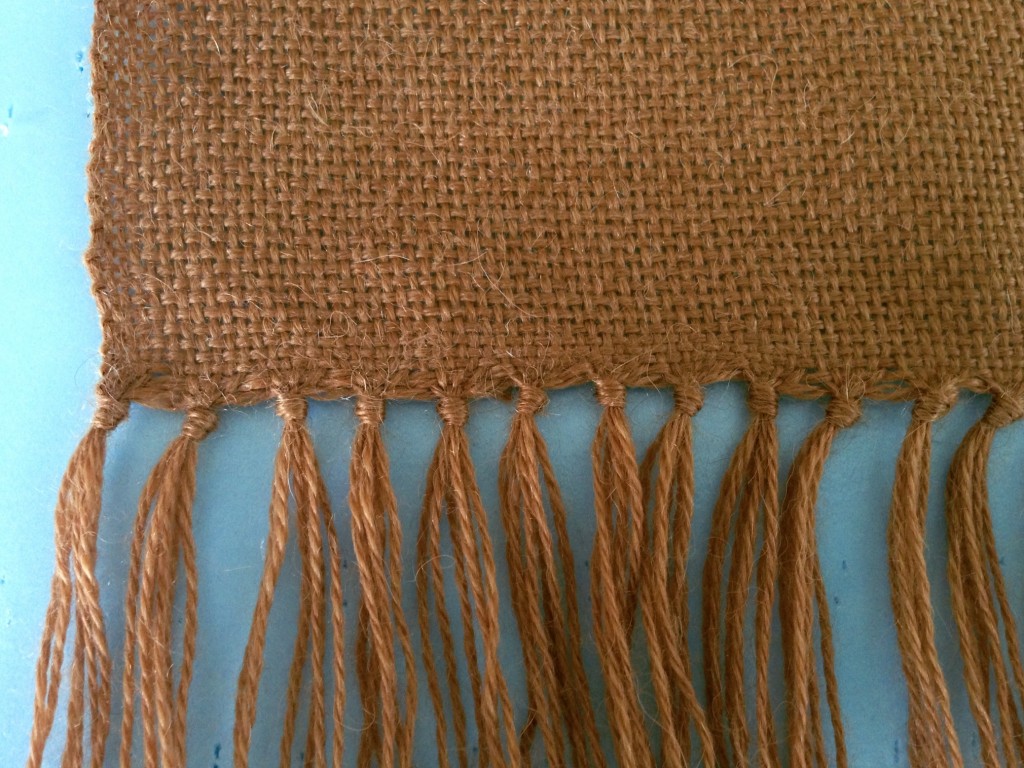
2. Place a straight pin through the top thread of each of several knots in a row, into the foam board under the fabric.
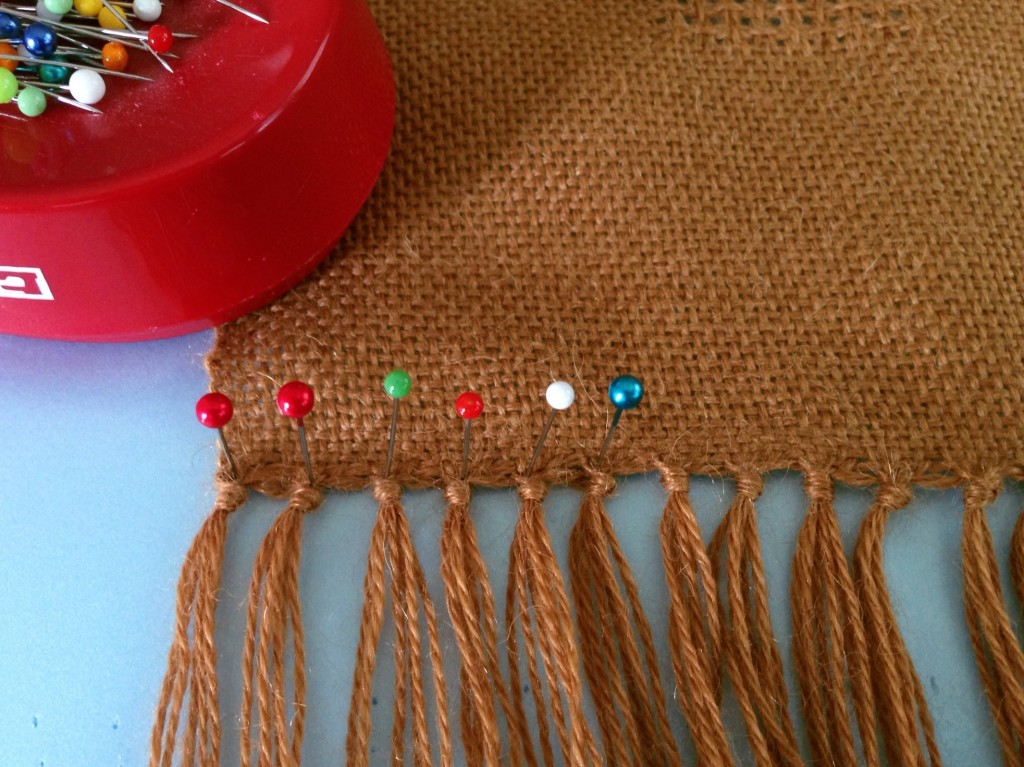
3. Use warping slat (or other template) as as spacing guide for the second row of knots. Lay warping slat flat, and place it flush against the row of pins. Using the width of the warping slat as a spacer, place a pin in the second row just below the slat, at the point where the knot will be formed.
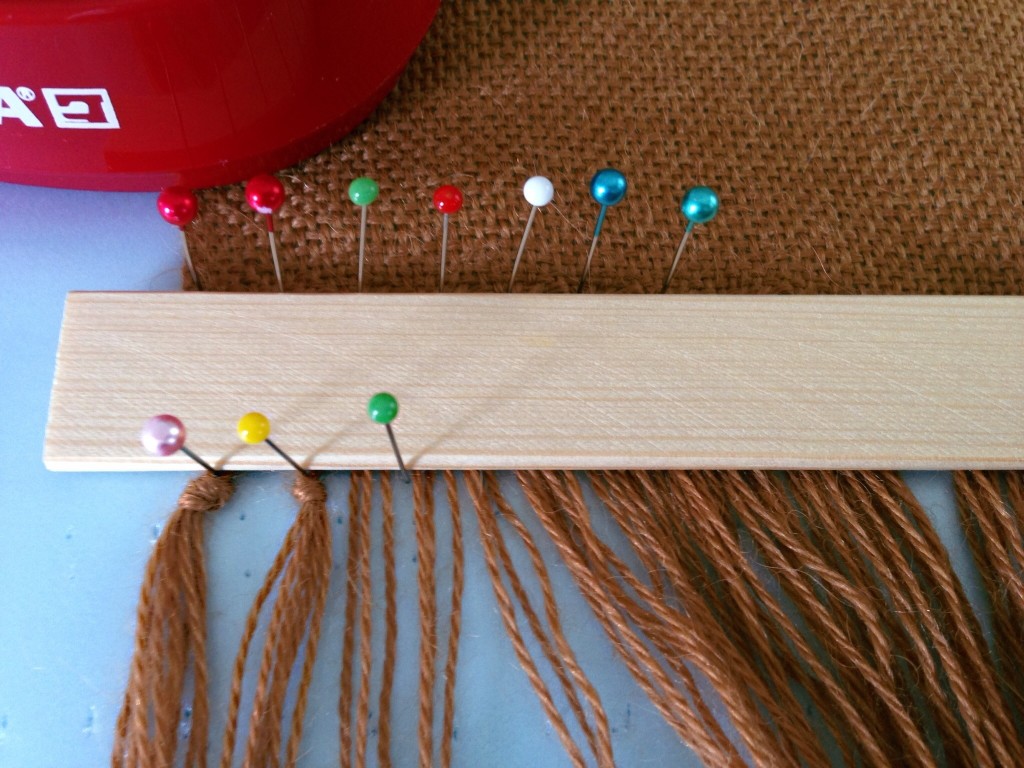
4. Remove warping slat. Loosely tie an overhand knot below the just-placed pin in the second row, leaving the center of the knot wide open.
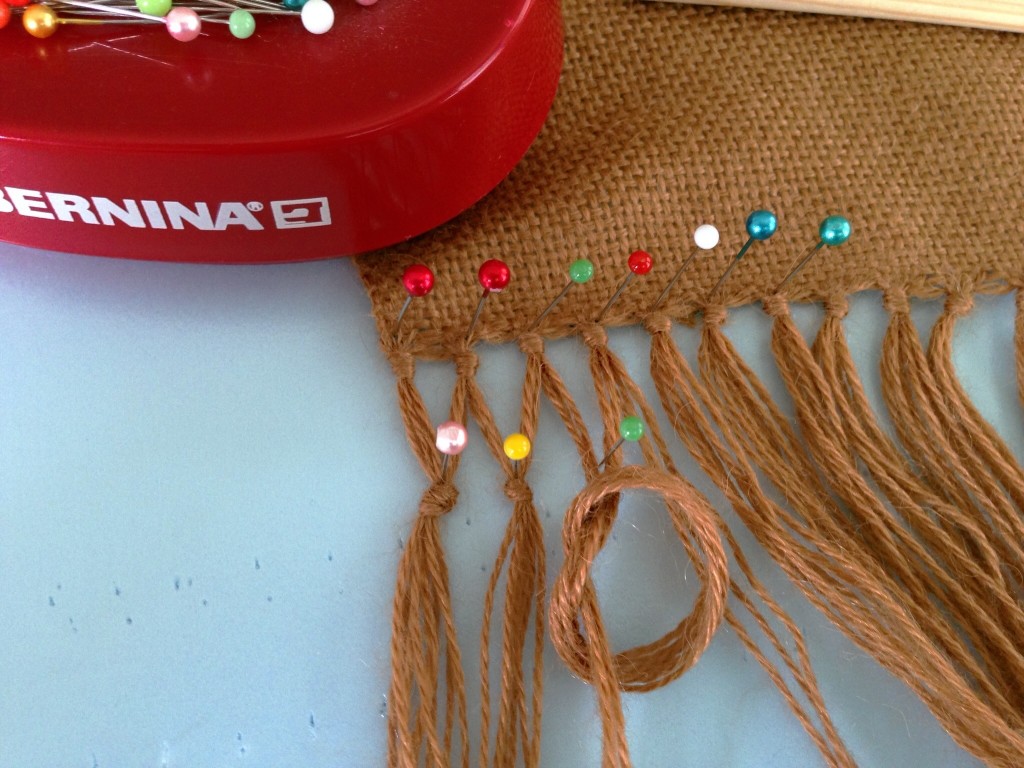
5. Insert another pin through the center of the knot just a fraction below the point of the first pin.
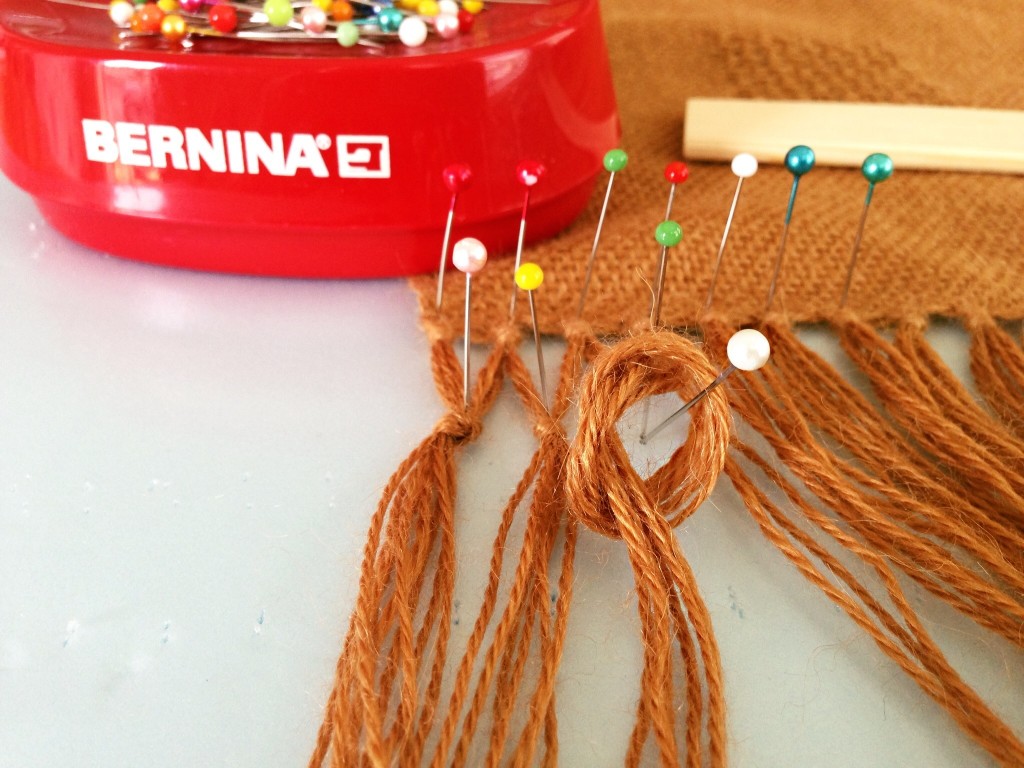
6. Slowly pull the knot to cinch it up to the point of the second pin.
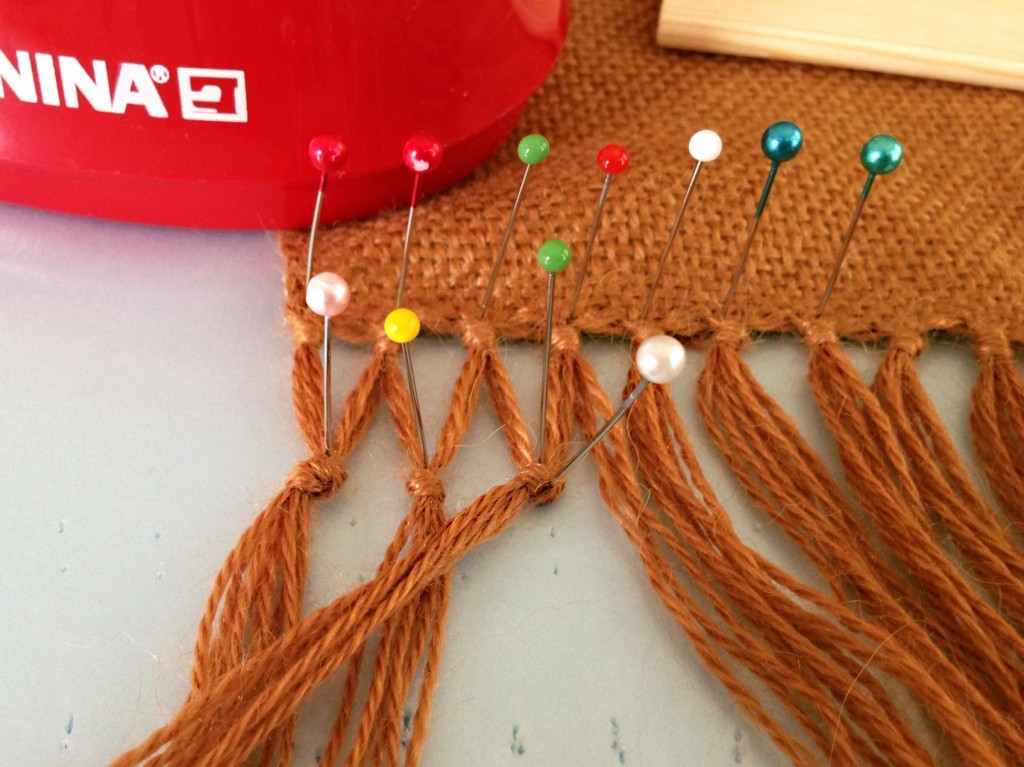
7. Holding the knot firmly between the fingers of one hand, with your other hand gently tug each strand of the knot to its full length.
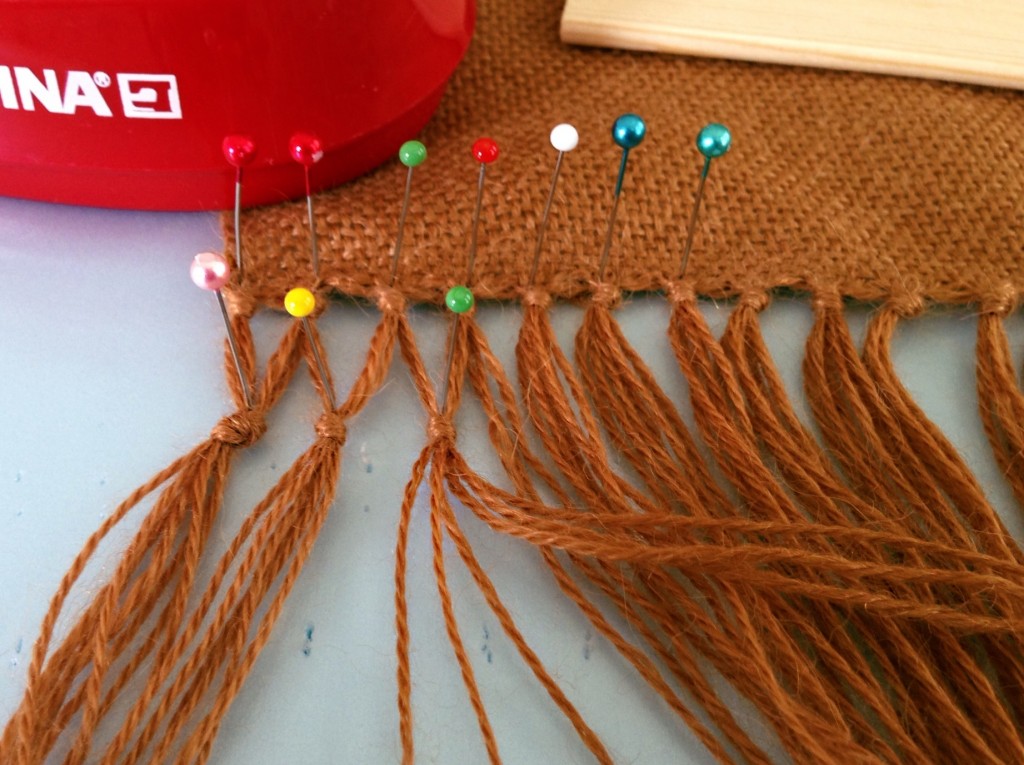
8. Continue tying knots across the entire row.
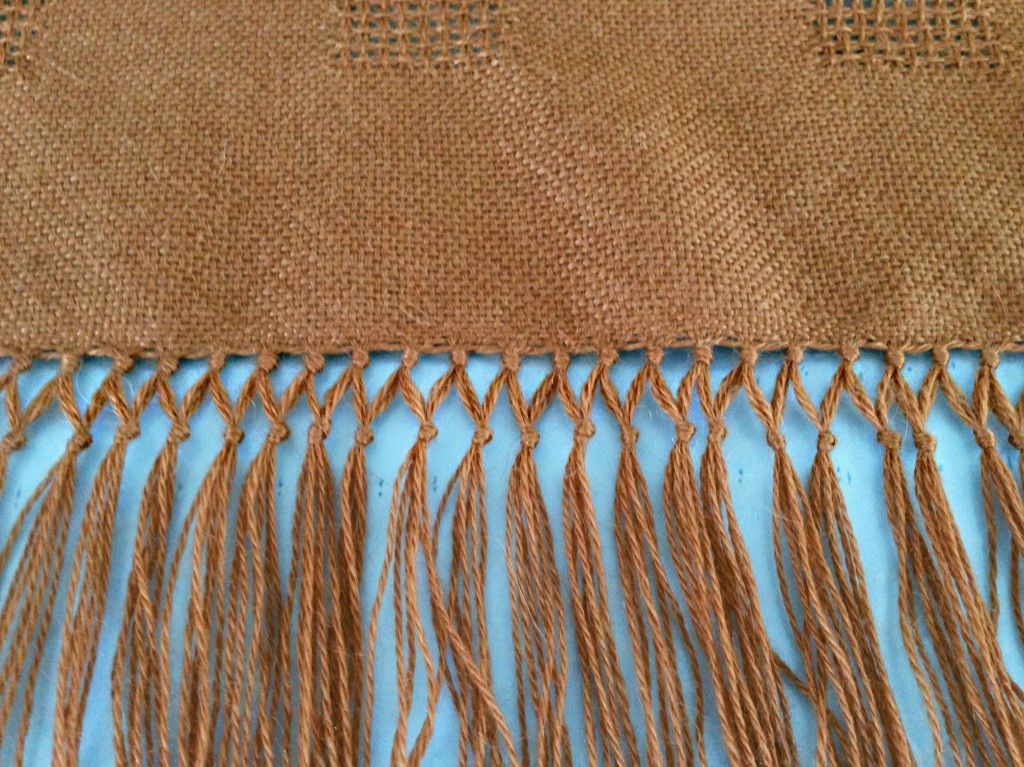
9. Repeat the process to add another row of knots.
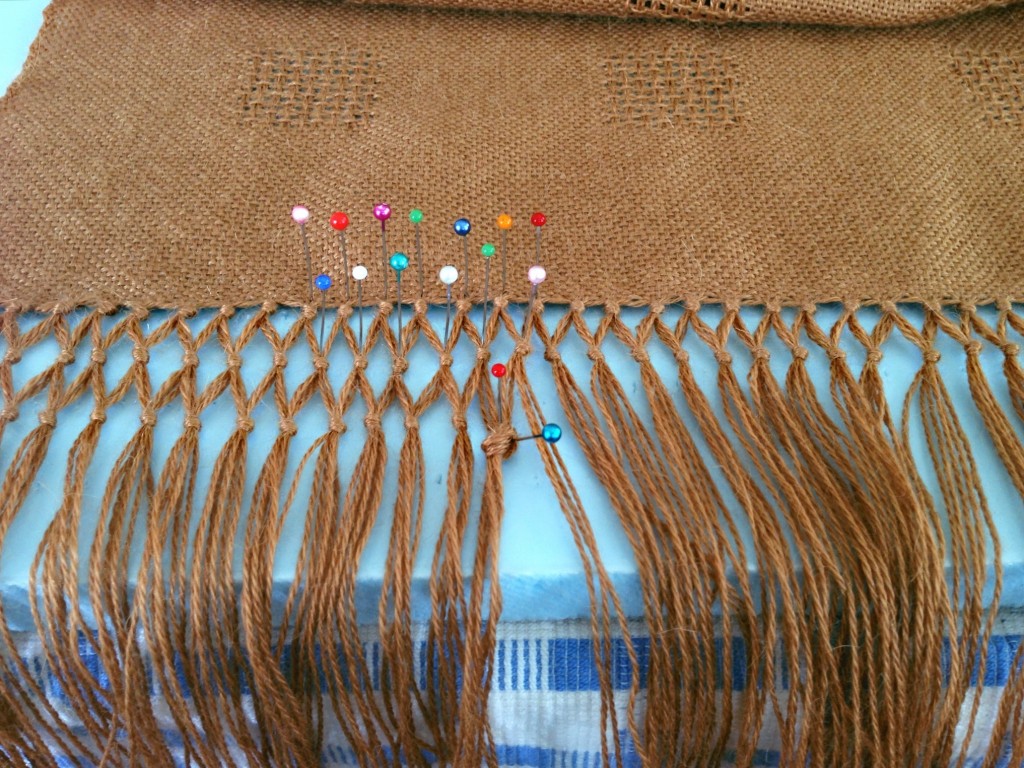
My confidence in my ability to tie these knots can drift into careless thinking. Maybe I’m good enough at this that I can leave out some steps. Do I really need that guide stick for spacing the rows? I think I can eyeball it. Pulling each strand to close the knot takes too much time. Why don’t I just skip that part? And soon, I am blind to the haphazard results I am creating. Pride is like that. In relationships and in life circumstances, though, the consequences are more severe than in fringe-tying.
Pride keeps me from seeing my own vulnerabilities. Pride puts me in harm’s way because it blinds me to the reality of my own shortcomings, and makes me think I’m above it all. I want to keep my eyes open to my need to learn and grow. Who wants to drift into haphazard results in life? Not I. Not you, either?
May you never be blind to the things that matter.
Feeling vulnerable,
Karen
